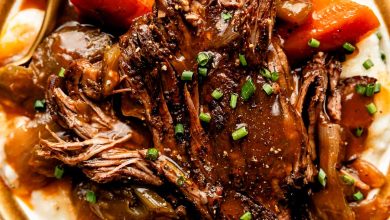Nutritious Pork Lungs: A Protein-Packed Ingredient for Hearty Dishes
Pork Fresh Var. Meat By-Products (Lungs, Raw) – Nutritional Information
Description
Pork fresh variety meat by-products, specifically pork lungs, are a unique yet nutritious part of the pig that is often used in various culinary traditions. While not as commonly featured in mainstream recipes, these organ meats are rich in protein and essential minerals, offering a distinct flavor and texture for those looking to explore offal-based dishes. When prepared properly, pork lungs provide a robust, savory taste and can be a valuable addition to a balanced diet, especially in dishes that call for hearty, protein-rich ingredients.
Nutritional Information
| Nutrient | Value |
|---|---|
| Energy | 85.0 kcal |
| Protein | 14.08 g |
| Total Fat | 2.72 g |
| Saturated Fat | 0.96 g |
| Carbohydrates | 0.0 g |
| Dietary Fiber | 0.0 g |
| Sugars | 0.0 g |
| Calcium | 7.0 mg |
| Iron | 18.9 mg |
| Magnesium | 14.0 mg |
| Phosphorus | 196.0 mg |
| Potassium | 303.0 mg |
| Sodium | 153.0 mg |
| Zinc | 2.03 mg |
| Copper | 0.083 mcg |
| Manganese | 0.017 mg |
| Selenium | 17.8 mcg |
| Vitamin C | 12.3 mg |
| Thiamin (Vitamin B1) | 0.085 mg |
| Riboflavin (Vitamin B2) | 0.43 mg |
| Niacin (Vitamin B3) | 3.345 mg |
| Vitamin B6 | 0.1 mg |
| Folate (Vitamin B9) | 3.0 mcg |
| Vitamin B12 | 2.75 mcg |
| Vitamin A | 0.0 mcg |
| Vitamin E | 0.0 mg |
| Vitamin D2 | 0.0 mcg |
Allergen Information
Pork fresh variety meats, including lungs, are generally considered safe for most individuals. However, as with all animal products, those with specific food allergies or sensitivities to pork or organ meats should avoid consumption. Always ensure that meats are handled, stored, and cooked properly to reduce the risk of contamination.
Dietary Preferences
- Gluten-Free: This ingredient contains no gluten, making it suitable for those with gluten intolerance or celiac disease.
- Low-Carb: With zero carbohydrates, pork lungs are an excellent option for those following low-carb or ketogenic diets.
- High-Protein: With over 14 grams of protein per 100 grams, pork lungs are an excellent source of high-quality animal protein, making them an ideal choice for those looking to boost their protein intake.
- Paleo-Friendly: As part of the offal family, pork lungs fit well into a paleo diet, which emphasizes whole, unprocessed foods.
- Low in Sugars: With no sugars or added sugars, this meat can be enjoyed by those looking to avoid sweeteners in their diet.
Cooking Tips and Advice
Pork lungs can be a versatile ingredient in the kitchen, though it requires careful preparation to ensure a pleasant texture and flavor. Typically, pork lungs are cleaned and cooked thoroughly before consumption, often by braising, stewing, or incorporating them into ground meat blends for sausages and pates.
For those new to cooking with organ meats, it is essential to:
- Rinse and Clean Thoroughly: Pork lungs should be cleaned well to remove any impurities. Soaking in vinegar or saltwater can help with this process.
- Slow Cooking: To enhance tenderness and flavor, pork lungs benefit from slow cooking methods like simmering or braising, which also helps to break down their naturally tough texture.
- Pairing Flavors: Because of their robust flavor, pork lungs pair well with bold seasonings such as garlic, herbs, onions, and rich broths. Spices like paprika or thyme can also complement their taste.
Conclusion
Pork fresh variety meat by-products, such as lungs, may be an unconventional ingredient in many kitchens but offer remarkable nutritional benefits. Rich in protein, iron, and essential minerals, pork lungs are a worthy addition to your cooking repertoire, especially if you’re looking for ways to utilize all parts of the animal for a more sustainable cooking approach. Whether you decide to incorporate them into traditional dishes or experiment with unique recipes, pork lungs can bring both flavor and nutrition to your meals.








